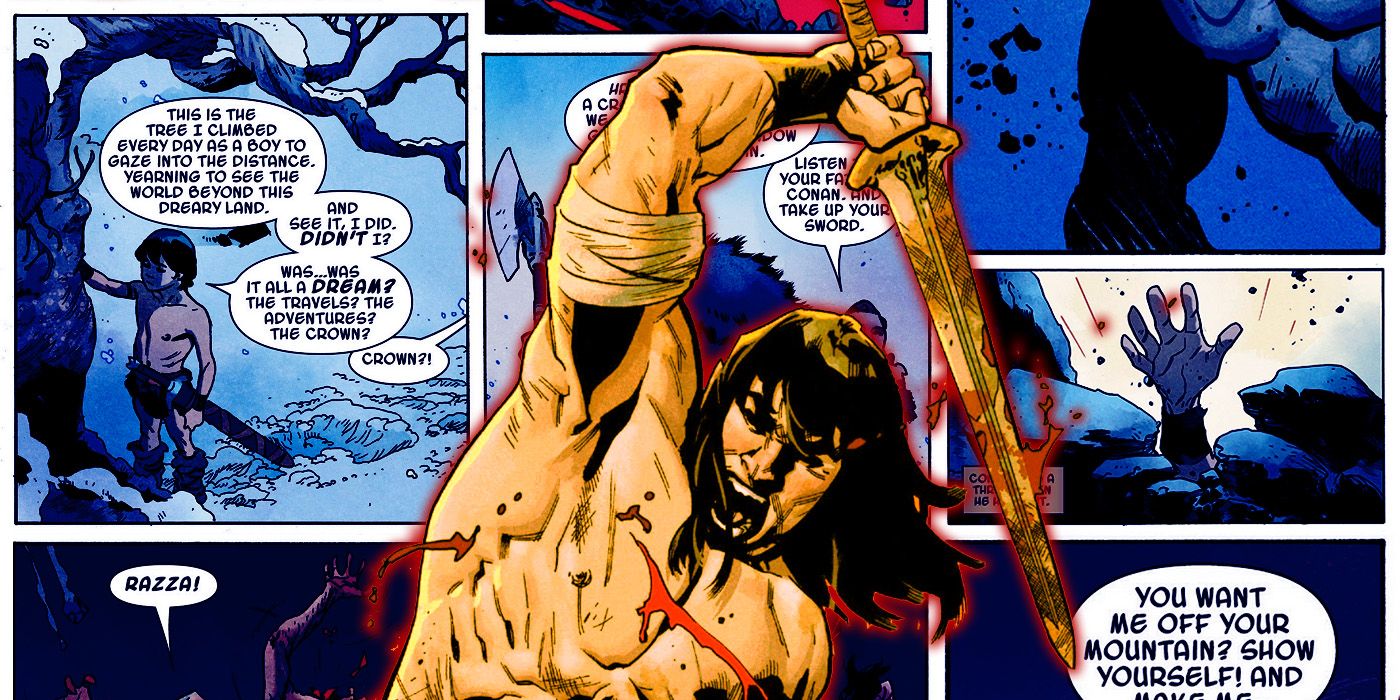Comic books are an art form unlike any other. Their unique graphic format makes them stand out. But while comic books’ panel to panel action is part of what makes them great, the medium has other tricks it can pull too. Several comics have shown why drawing outside the margins can help enhance the action.Graphic novels and their shorter relatives, the comic book, have existed in one form or another for over a century. In the intervening 150+ years there has been considerable development to the format. Times may have changed since then. Yet the fundamental elements of the medium remain. Panels still split up the action and provide direction for the reader. However, there have been more and more examples of writers and artists exploring the potential that exists beyond the panel. Whether this comes in the form Conan’s blood soaked maps, Absolute Carnage’s Ravencroft patient files, or the frenetic artwork of Ron Lim, it is clear comic books can do some of their best work outside the box.A comic book panel is a single beat of story. Yet a single panel can hold an enormous amount of action despite being only a fragment of the larger narrative. Creative use of these panels can enhance this action immensely. Green Arrow 2001 #57 (by Judd Winick, Ron Garney, Ron Lim, Bill Reinhold, Guy Major and Pat Brosseau) gives readers a fantastic example of this. Here, Doctor Light fends off a volley of arrows fired by Connor Hawke and Mia Dearden. Arrows fired in one panel rain down into many. The reader has to peer past this hail of arrows in order to follow the story. This places the reader into the midst of the action, amplifying its intensity considerably.RELATED: Was Bernie Wrightson Nearly the Artist on Marvel’s Conan the Barbarian?RELATED: Artist’s Color Palette for Multicultural Skin Tones Goes Viral
Comic books are an art form unlike any other. Their unique graphic format makes them stand out. But while comic books’ panel to panel action is part of what makes them great, the medium has other tricks it can pull too. Several comics have shown why drawing outside the margins can help enhance the action.
Graphic novels and their shorter relatives, the comic book, have existed in one form or another for over a century. In the intervening 150+ years there has been considerable development to the format. Times may have changed since then. Yet the fundamental elements of the medium remain. Panels still split up the action and provide direction for the reader. However, there have been more and more examples of writers and artists exploring the potential that exists beyond the panel. Whether this comes in the form Conan’s blood soaked maps, Absolute Carnage’s Ravencroft patient files, or the frenetic artwork of Ron Lim, it is clear comic books can do some of their best work outside the box.
A comic book panel is a single beat of story. Yet a single panel can hold an enormous amount of action despite being only a fragment of the larger narrative. Creative use of these panels can enhance this action immensely. Green Arrow 2001 #57 (by Judd Winick, Ron Garney, Ron Lim, Bill Reinhold, Guy Major and Pat Brosseau) gives readers a fantastic example of this. Here, Doctor Light fends off a volley of arrows fired by Connor Hawke and Mia Dearden. Arrows fired in one panel rain down into many. The reader has to peer past this hail of arrows in order to follow the story. This places the reader into the midst of the action, amplifying its intensity considerably.
#Comics #Move #Panel
Note:- (Not all news on the site expresses the point of view of the site, but we transmit this news automatically and translate it through programmatic technology on the site and not from a human editor. The content is auto-generated from a syndicated feed.))



